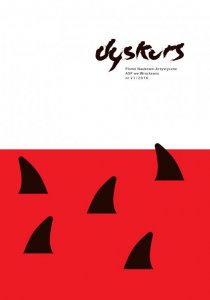DE PARASITES SOCIAUX AU FAMEUX SAPEUR
FROM ‘SOCIAL PARASITE’ TO ‘FAMOUS SAPPER’. THE ART OF CIVIL DISOBEDIENCE
Author(s): Leszek BrogowskiSubject(s): Philosophy, Language and Literature Studies, Fine Arts / Performing Arts, Political Philosophy, Social Philosophy, Sociology of Art
Published by: Akademia Sztuk Pięknych im. Eugeniusza Gepperta we Wrocławiu
Keywords: FUNCTION OF ART; SOCIAL PARASITISM; CIVIL DISOBEDIENCE; ANARCHISM; ALIENATION / DE-ALIENATION OF ART
Summary/Abstract: FROM ‘SOCIAL PARASITE’ TO ‘FAMOUS SAPPER’.THE ART OF CIVIL DISOBEDIENCE. In the essay, there are two planes which collide: one concerning artistic practice of recent years considered as ‘parasitic’ in art (see: the symposium in Amiens in 2006), the second – de-alienating function of art as interpreted by Laurent Marissal, whose book (‘Pinxit: Painting from 1997 to 2003’Rennes, Éditions Incertain Sens, 2005) is under consideration here. Their aim is to link the issues which emerge from the clash with political and intellectual history in order to better grasp their meaning and relevance.In the first part of the essay, the notion of parasitism is interpreted through the prism of sinister, sometimes murderous consequences of ‘socialparasite’ – the ideas by the Nazis and the Soviets. It is confronted with references to parasitism in political economy (Adam Smith, Karl Marx,Pierre-Joseph Proudhon, Stanislav Andreski). It turns out then that ‘socialparasite’ is not a idea, but an inconsistent set of contradictory meanings,which depend on the ideological point of view.In the second part, starting from the socio-economic context of the artist’s work, as well as the political implications of the use of the term ‘parasite’ in the context of art, the analysis of the artistic practice by Laurent Marissal leads to the historical reconstruction of the concept of alien-ationand ways of philosophical understanding of art as de-alienating experience. The reconstruction combines several philosophical traditions,including the following traditions: the writers of the Enlightenment (DenisDiderot, Jean-Jacques Rousseau, Maxime de Robespierre, Friedrich Schiller),the philosophers of anarchism (Max Stirner, Pierre-Joseph Proudhon,Mikhail Bakounine, Leo Tolstoy), but also in a bit more surprising way, KarlMarx and Umberto Eco, whose theory of open work is in fact the answer to the question of alienation in the sense de-fined by Marx.Issues emerging from these analyzes combine both aesthetic and political consequences: civil disobedience (when freedom of speech leads artists to the edge of legality: Krzysztof Wodiczko, Alfredo Jaar, Francis Alÿs, Gianni Motti, Pierre Huyghe, clido Mereiles, etc.), de-alienation of the functionof art (aesthetic education by Schiller and/or political action – including in art – according to Marx’s theory?), the concept of time in the experience of alienation, especially in the case of artists whose paid work does not coincide with artistic activities (Witold Gombrowicz and other writer wrote about this problem), and finally the theory of property (based on the use or the possession ?, not-be-alienated property based on the right of the artist or to the unlimited right to own?). French term ‘jouissance’, having both the sense of the legal and existential, meaning both ‘right to use’ and ‘pleasure’ and even ‘orgasm’, is the subject of a fascinating analysis byDiderot in ‘Encyclopedia’.In 1997, Laurent Marissal was employed as a staff member to watch the collection of paintings at the Museum of Gustav Moreau; a situation typical for young artists, because Marissal just graduated from the Academy of Fine Arts in Paris. It is in this context he developed his idea and practice of art as a way of recovering the time sold to his employer, and he used unions as the instrument of that practice. In 2003, he resigned, and in 2005, he publishes ‘Pinxit: Paintings from 1997 to 2003’, as the document– story and expression of artistic experience, where art and work merge with life.
Journal: DYSKURS Pismo Naukowo-Artystyczne ASP we Wrocławiu
- Issue Year: 2016
- Issue No: 2 (21)
- Page Range: 48-83
- Page Count: 36
- Language: French

